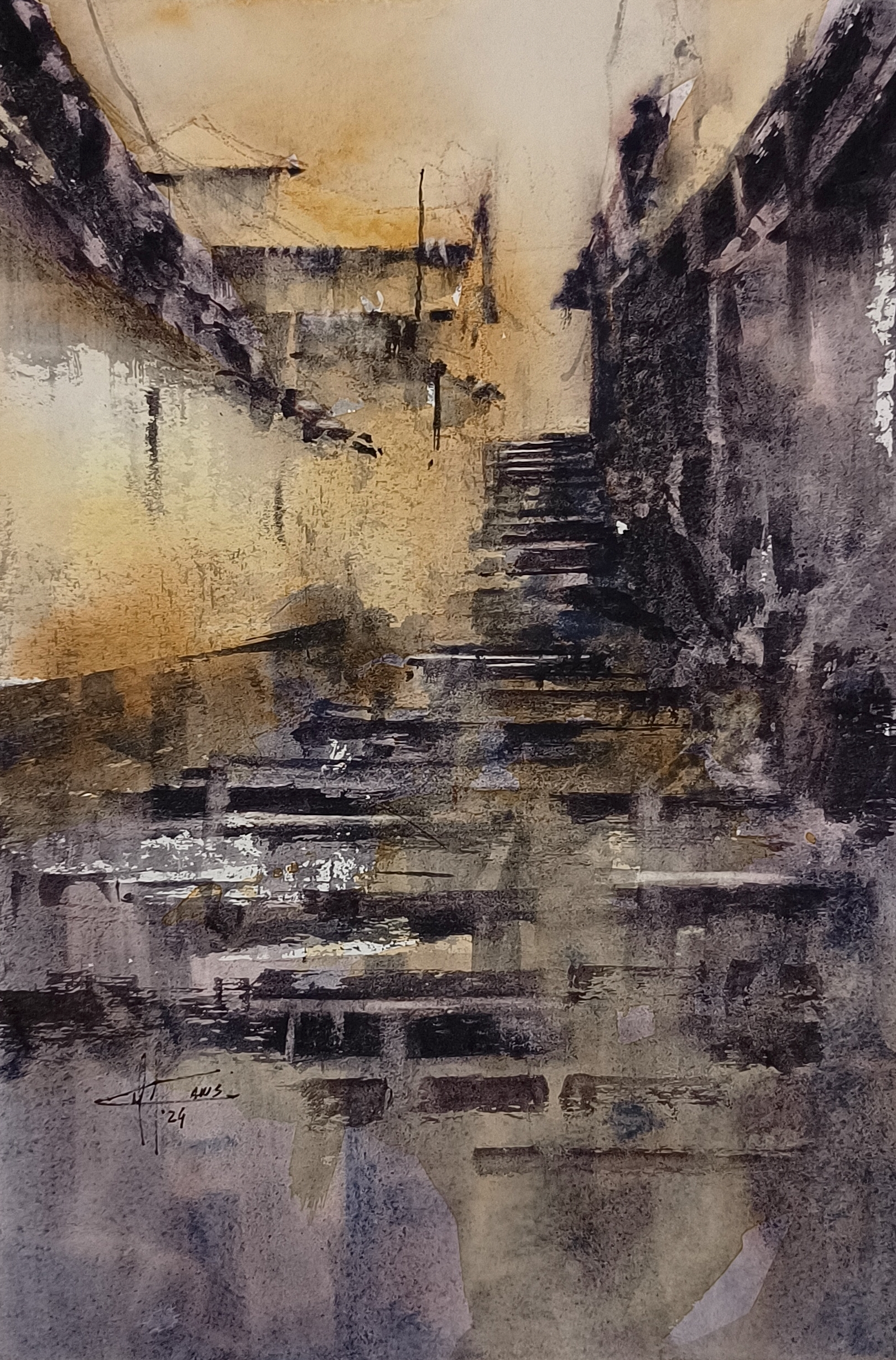In my workshops, I’m often asked about the differences between these organic and inorganic pigments, as well as the different ways they behave in painting.

What are organic pigments?
Organic pigments contain carbon and are usually bright, pure, light in weight and rich in tinting strength. They are made up of carbon atoms, which form strong, stable chemical bonds and are always present in animal, vegetable and synthetic organic chemistry.
There are three kinds of organic pigments: pigmentary colors, metal salt pigments (or toners), and lakes.
Pigmentary colors are insoluble and inherently colored. Toners and lakes start out as soluble particles, sometimes called dyes. To function as pigments, the dyes are chemically or electrically fixed to particles of inert, colorless pigment such as alumina trihydrate. Because they’re not very lightfast, metal salts and toner pigments are not used in DANIEL SMITH paints, but some manufacturers of artists’ paints do use them.
Lakes are used in the food industry and sometimes in artists’ colors. Alizarin Crimson is an example – although Anthraquinoid Red and Permanent Alizarin are more lightfast alternatives.
How are natural and synthetic organic pigments different?
Natural organic pigments are derived from vegetable or animal extracts. They are the original, less permanent versions of certain well-known colors. Sepia, for example, used to be made from mollusk ink sacs and Carmine was extracted from the cochineal beetle. Indian Yellow, Indigo and Sap Green were originally derived from plants, Rose Madder Genuine still is. Ivory, Bone and Vine Blacks were made from the ground charcoal of burnt ivory, bone and certain kinds of wood.
Before the 1850s, most organic pigments were natural in origin, but with advances in organic chemistry, the vast majority have been replaced with synthetic organic pigments—some of which simulate hues found in the natural organics. The physical form and shade of synthetic pigments can be controlled much more predictably than their natural counterparts, and they tend to be more lightfast and offer a much broader range of color. Today’s synthetic organic colors include vivid, permanent phthalos, quinacridones and perylenes.
Staining organic pigments include the Phthalos, Alizarin Crimson, Anthraquinoid Red (a more lightfast substitute for Alizarin), Prussian Blue, Hansa Yellow , Hooker’s Green, Indigo, Payne’s Gray, Perinone Orange and the Quinacridones (which also have transparent characteristics). Despite the generally more uniform pigment particle size, there are a few sedimentary organics, such as Ultramarine Blue, Ultramarine Violet and Cerulean Blue. Transparent organic pigments include Rose Madder Genuine, Viridian, and the Quinacridones, which make wonderful glazes.
What are inorganic pigments?
These pigments contain metals. They include the classic earth colors, PrimaTek® and Historic Mineral colors, cadmiums and cobalts. Mined from the earth or created in the lab using metallic compounds, inorganic pigments can be transparent, translucent or opaque and are made of distinctively shaped particles with inherent color.
Most of the mined colors have been available to artists since prehistory, while many of the lab-created colors have been available for 100 years or more. Inorganic pigments tend to be opaque, dense, heavy in weight and completely permanent.
What’s the difference between natural and synthetic inorganic pigments?
The natural earth colors or crude ores (ochres, umbers, siennas) are mined directly from the earth. Their rich colors come from iron oxides and hydroxides, copper, chromium or aluminum, along with various amounts of clay, chalk and silica. DANIEL SMITH offers an unusually broad range of distinctive earth colors.
When earth colors are roasted or calcined, their usual color becomes warmer and deeper, and produces different hues. For example, calcined Raw Sienna creates Burnt Sienna.
The synthetic inorganic pigments are primarily metallic compounds manufactured in the laboratory. They include Cobalt Blue, Cadmium Yellow and Zinc White. These laboratory creations contain fewer impurities and have smaller particles than their natural mineral counterparts. They tend to produce smoother, less sedimentary washes than the natural inorganics.
How are inorganic pigments used in watercolor paintings?
Their uses are as varied as the colors. Often I use the inorganic pigments more for their qualities in a mix than for their color—i.e. a touch of Cobalt Violet in a mix adds very little color, but promotes interesting sedimentation. Buff Titanium dives into a still wet area on the paper, and moves the other pigments around. Nickel Azo Yellow also dives through the painted passage and creates a new form—wonderful in autumn trees! Sedimentary inorganic colors include all the earth pigments such as Venetian Red, Cadmium Orange, Cobalt Green, Cobalt Violet, Nickel Azo Yellow, Lunar Earth, Lunar Red Rock. The transparent inorganics such as Cobalt Blue and Aureolin (Cobalt Yellow) are wonderful for layered glazes, giving the beautiful sense of transparency and depth that watercolor is famous for.







